
You’re sitting in a faculty meeting and starting to lose focus. Not wanting your colleagues to think you’re zoning out, you keep your pen to your notebook and move it around aimlessly while pretending to diligently take notes. At the end of meeting, you glance down to find your page filled with an array of squiggly circles or stars, or perhaps more elaborate shapes.
If your colleagues were to catch a glance at the page, they may be miffed and accuse you of not paying attention. But, studies have shown that doodling may actually help to promote creativity, active listening and recall.
Peter Schwenger, a professor emeritus of English at Mount St. Vincent University, acknowledges that doodling is often something you do when you’re tired and “simply can’t drag out another sentence.” But, he says, “At such times, at least you’re still making marks on paper, instead of just getting up and walking away.”
Dr. Schwenger, who is also a resident fellow at the Centre for the Study of Theory and Criticism at Western University, did a presentation on doodling at the annual meeting of the Association of Canadian College and University Teachers, or ACCUTE, during the 2016 Congress for the Humanities and Social Sciences in Calgary. His research is focused primarily on asemic writing – writing that has no specific semantic content – but he has also pursued several byways, doodling among them. A doodler never knows in advance what the final product is going to be, he says. “The line is followed out almost as if it had a will of its own, and it may take surprising shapes.”
Sunni Brown, who’s been called a doodle evangelist, takes it a step further, stating that we need to change the culture around doodling. Author of The Doodle Revolution and founder of Sunni Brown Ink, a “visual thinking” consultancy in Austin, Texas, Ms. Brown explains in her 2011 TED Talk that doodling is native to us all, even though it’s been ingrained in us that it’s bad.
“I’ve heard horror stories from people whose teachers scolded them, of course, for doodling in classrooms,” she says in her 2011 talk, which has been viewed more than 1.25 million times. “And they have bosses who scold them for doodling in the boardroom. There is a powerful cultural norm against doodling in settings in which we are supposed to learn something.”
She continues: “We think doodling is something you do when you lose focus, but in reality, it is a pre-emptive measure to stop you from losing focus. Additionally, it has a profound effect on creative problem-solving and deep information processing.”
Dr. Schwenger agrees. “The most original research is often driven by curiosity or fascination. It’s a bit like a detective story, with false leads, breakthroughs and the ongoing investment in learning how it’s all going to turn out. Doodling, with its apparently aimless evolution, enacts that process of discovery. It may remind a baffled or stymied scholar that research has a will of its own, and will sort itself out in the end,” he says.
The actual research on doodling is, however, relatively slim. Perhaps the seminal study in this area, published in the journal Applied Cognitive Psychology in 2009, showed that doodling can help with recall. In the study by Jackie Andrade, a professor of psychology at the University of Plymouth in the U.K., two groups were asked to listen to a monotonous phone conversation. One group was told to just listen to the call, while the other group was instructed to shade in shapes on a page while listening. Dr. Andrade found that the doodling group recalled 29 percent more information from the phone call than the non-doodling group.
However, an article in the 2012 edition of the University of British Columbia’s Undergraduate Journal of Psychology found that doodling had a negative effect on visual recall. The study, by UBC psychology student Elaine Chan, found that subjects who were asked to doodle while viewing a slideshow were less able to recall the images they had seen than non-doodlers. “Doodling may only be beneficial in dual-task situations where the two tasks do not compete for the same information processing resources,” the study concluded.
Michiko Maruyama started doing daily doodles while in medical school at UBC in the early 2010s, basing them on what she was learning.
Her doodles were detailed and colourful – perhaps not surprising since Dr. Maruyama has a degree in industrial design from the University of Alberta. Thinking that others might like to see her doodles, she began posting them on Facebook.
“Then one day my father called me, very disappointed. He said, ‘What are you doing? You’re in medical school now. You should behave like a med student. You have to stop this art thing,’” recalls Dr. Maruyama.
Devastated, she stopped drawing and went back to traditional study methods like highlighting and written notes. But, a funny thing happened, she says: her grades began to slip. “I realized at that point that I learned through doodling. Doing those daily doodles really helped when I was consolidating my learning for the day. I started to doodle again and my grades came right back up. Now my dad supports doodling,” she says with a laugh.
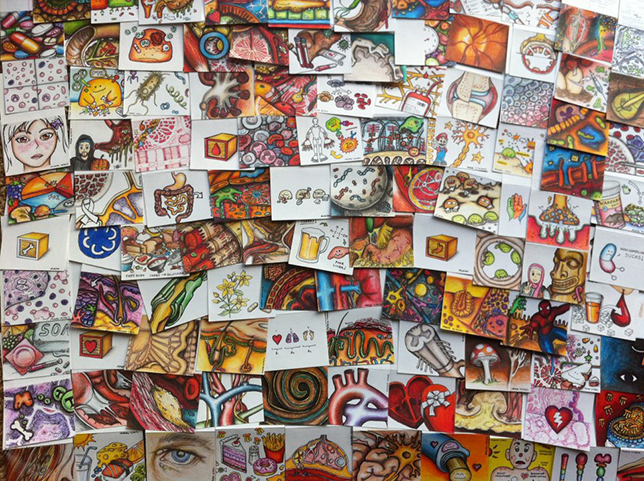
Currently finishing her second year of residency at U of A, specializing in cardiac surgery, Dr. Maruyama admits that her doodles are much fancier than most. Regardless, she does find that they help to clarify complex topics for her – and seemingly for others. After one of her exams during medical school, she says, a fellow student came up to her and said he’d been stuck on a question about bone metabolism but recalled a doodle she’d posted to Facebook on that particular subject and was able to answer the question.
Like Dr. Maruyama, others have taken up doodling as a type of visual note-taking. Designer, author and illustrator Mike Rohde, who lives in Milwaukee, Wisconsin, says he always considered himself an expert note-taker. At meetings or conferences, he would meticulously write down everything the speaker said, comforting himself with the thought that he could go back and read the notes later to really grasp the concepts. But what actually happened? “I would look through my notes and think, ‘There’s no way I am going to hack my way through all of the info to try and find the value.’ It’s just too much.” he says.
So, in 2007, he changed tack and traded his large notebook and pencil for a small Moleskine diary and a pen. At his next conference, he captured the main concepts of the speaker by sketching them on a single page. “I would only focus on the things that I thought I could make use of. I had to really listen closely and then make an analysis on what was valuable info and what wasn’t. Because I was doing this analysis, I actually had a little bit of availability to start playing with lettering and imagery and even layout. So I started to experiment with that.” He called his technique “sketchnoting,” and in 2013 he penned The Sketchnote Handbook, an illustrated guide to visual note-taking for beginners.
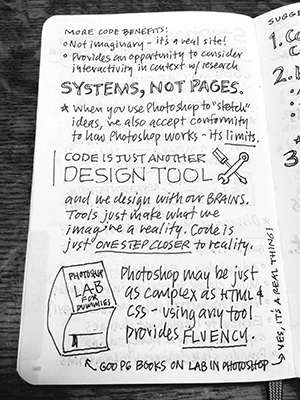
Mike Rohde/Flickr.
“Sketchnotes don’t require high drawing skills, but do require a skill to visually synthesize and summarize via shapes, connectors and text,” says Mr. Rohde. He now gives workshops on sketchnoting, where he helps newbies to create their own “visual vocabulary.” He’s also written a second book, The Sketchnote Workbook, and launched a podcast, The Sketchnote Army, which is dedicated to showcasing sketchnotes and sketchnoters from around the world.
Giulia Forsythe, a special projects facilitator at the Centre for Pedagogical Innovation at Brock University, is also a big visual note-taking enthusiast. In 2013, she was invited to a TEDx Talk in Puerto Rico to digitally draw the visual notes for the talks as they were given.
“I am a fan of sketchnoting because it resonates with my love of doodling, helps me keep my focus and it’s fun,” she says. “Relatedly, I like to challenge faculty to create mind maps of their course to see how their material fits together and flows,” she says.
Brock is running a pilot project this fall designed for teaching assistants in the classics to help students make connections between what they learn in the large-classroom lectures and their discussions in small-group seminars. “We are going to model a variety of instructional strategies for teaching assistants, and one of them will be encouraging students to try visual note-taking, which will include drawing practice.” Ms. Forsythe adds that one of her goals at Brock is to remove the stigma around doodling and show people that it can help with active listening.
Robert Dimeo echoes this opinion. “If you are interested in developing better recall, if you’re not satisfied with how well you are able to retain information, if you’re looking for better comprehension, if you’re interested in not sleeping through faculty meetings, then this is a good way to stay engaged and focused,” he says. Dr. Dimeo is director of the Center for Neutron Research at the National Institute of Standards and Technology, a U.S. government agency in Maryland.
Dr. Dimeo started sketchnoting in 2014. He says he’d attend very complex meetings at work and struggle with some of the concepts that were outside of his breadth of knowledge. Nonetheless, he would fill his notebook with notes, which he would then never look at. In a moment of frustration, he Googled “note-taking” to see if he could find a solution to his problem. During his search he came across articles on visual note-taking and eventually sketchnoting. After exploring some of the examples online, he likened the sketchnotes to billboards.
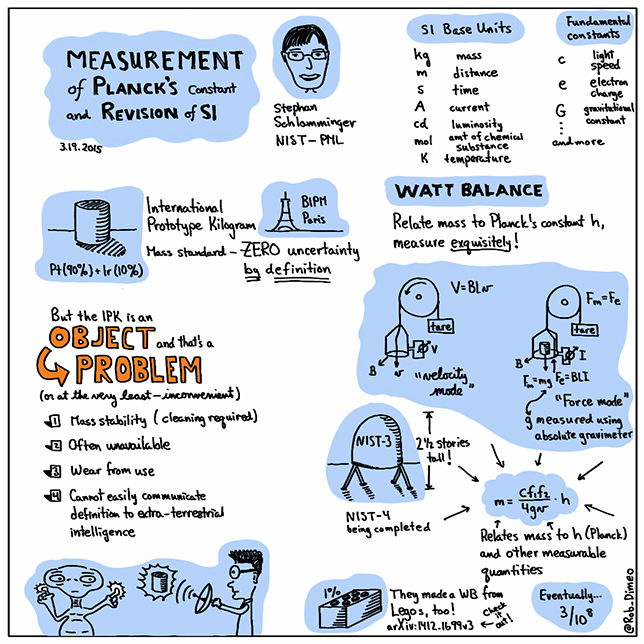
“You have a very short period of time to assess what is going on and what the message is. In the sketchnotes that I saw, I really liked the use of lettering, typography and very simple doodles that all combined to tell a story, or at least support one message.”
Is sketchnoting for everyone? It can be, says Dr. Dimeo. “It’s been a performance game-changer for me,” he says. “But there is a time commitment. Doing one or two and getting frustrated when you’re not happy with the outcome is pretty common for people. But once you have mastered the specific skills – listening, rapid doodling, being able to boil a message down – it all comes together.”
Nancy White, a graphic facilitator based in Seattle, agrees. “I would say, for many people, moving into the visual realm may help unstick them in areas of their thinking and move them through areas they might not have seen otherwise because it asks you to think differently. It asks your brain and your body to work with a material differently.”
Doodling for Academics, the book
Not strictly about the benefits of doodling, the book Doodling for Academics is a tongue-in-cheek take on academic life. Author Julie Schumacher organized the book around a day in the life of a hapless, lowly professor. “It’s a satirical activity book, I suppose. I think what’s fun about it is it’s a lowbrow rendition of an erudite field,” says Ms. Schumacher, a professor and director of the creative writing program at the University of Minnesota.
Pages in the book include “the 4 a.m. fantasy,” which depicts a pile of bestselling books, money flying through the air and champagne bottles popping; a fashion activity page where the reader must match the accessories depicted (Swiss Army knife, sceptre, mug) to the appropriate person (donor, grad student, department chair); and a “promotion path” game, including squares for vengeful colleagues, failure to publish and arriving at full professor. “I think people in academe are eccentric, often. And I think the doodling book helps to point that out,” says Ms. Schumacher. “It’s a very particular universe that we operate within.”
Get doodling!
To doodle, one needs only a piece of paper and a pen or pencil. For sketchnoting, Mike Rohde mostly uses Moleskine notebooks and gel pens, but has begun experimenting with the iPad Pro and a stylus. “It works a lot like pen and paper, with the advantage of undo and moving and stuff. But I wouldn’t call it really a replacement for paper.” Robert Dimeo also uses a Moleskine and sometimes a sketchbook, but the majority of his work has been done using an iPad Pro and Apple pen. “The app that I use is called Procreate and I can tailor it to my workflow. Once I had that optimized to my liking, you don’t have to think about it anymore. It’s not much different from using pen and paper, except that it’s a lot easier to edit.”
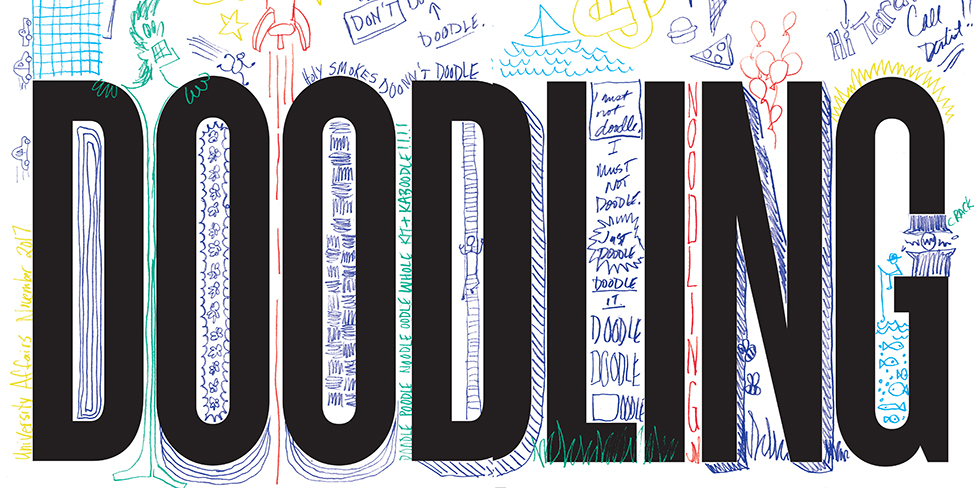
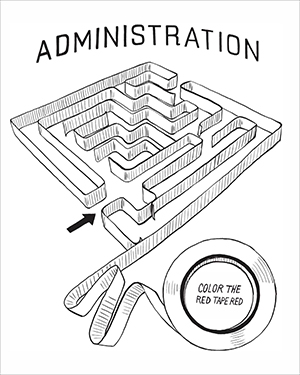
Visual note-taking has been a great help for studying different topics. I want to share my experience with some images and thoughts here:
http://vizthinker.com/infographic-and-data-visualization-sketchnotes/
hope is useful. Regards,
Javier